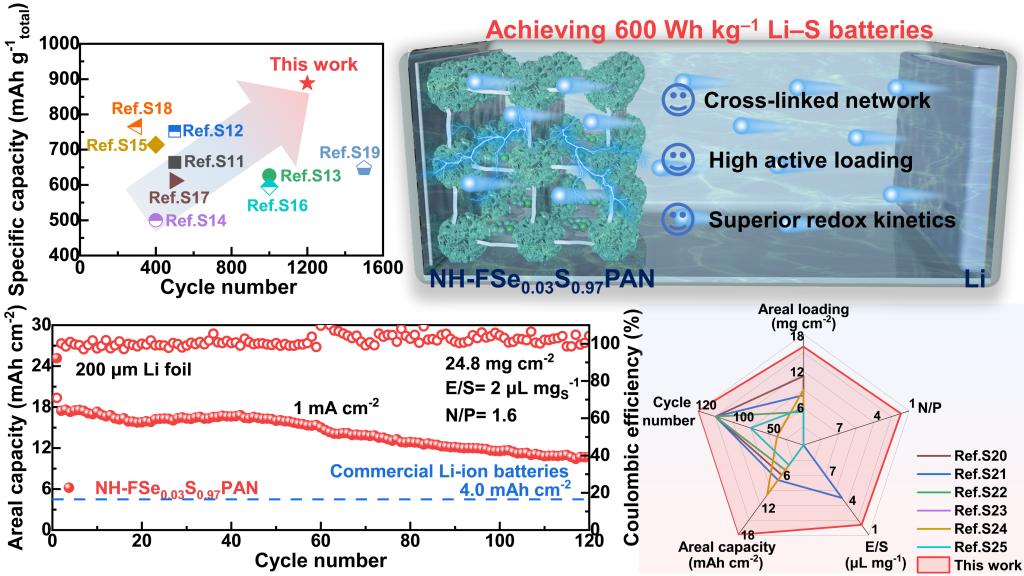《Cross-linked nanoflower network and Se-doping enabling sulfur rich SPAN towards lithium‒sulfur batteries beyond 600 Wh kg‒1》
Sulfurized polyacrylonitrile (SPAN) is one of the most promising cathodes for high-energy-density lithium‒sulfur batteries since its distinctive organic skeleton and covalent sulfur storage mechanism effectively prevent polysulfide dissolution and mitigate volume expansion. However, its low sulfur content and sluggish reaction kinetics significantly limit the practical energy-density and commercial viability of Li‒SPAN batteries. Herein, we utilize hydrazine hydrate to synthesize a nitrogen-rich cross-linked nanoflower-shaped polyacrylonitrile (NH-FPAN) as the sulfur host material. During sulfurization, the abundant nitrogen adsorb sites and cross-linked network enable the coexistence of elemental sulfur and covalent sulfur, enriching the sulfur content from 40% to 65%. Moreover, the unique polymeric skeleton and selenium-doping accelerate reaction kinetics, leading to high utilization of sulfur capacity. Consequently, this cathode delivers an ultrahigh composite capacity over 1000 mAh g‒1 and exceptional stability over 6000 cycles. A coin cell with ultrahigh cathode loading of 24.8 mg cm‒2 affords remarkable areal capacity of 25.2 mAh cm‒2 and energy-density up to 638.6 Wh kg‒1. This strategy shows promise to break through the sulfur content and capacity limitation of SPAN, advancing Li‒SPAN batteries toward practical energy storage applications.


 网站首页
>
正文
网站首页
>
正文